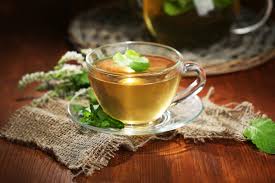https://healthandwellnesstore.square.site

Green Tea Boost Your Health
What is green tea? Green tea was originated in China. However, you can also find a lot of green tea in Asia. Green tea is made from Camellia sinensis leaves. Chinese green teas are made from over 600 different cultivars of the Camellia sinensis plant.
Types Of Tea Plants
There are two principle varieties of the Camellia sinensis tea plant from which the tea we drink is produced.
· Camellia sinensis sinensis: This is a smaller-leafed variety native to China that is typically used to make green and white teas. It evolved as a shrub growing in sunny regions with drier, cooler climates. It has a high tolerance for cold and thrives in mountainous regions.
· Camellia sinensis assamica: This is a larger-leafed variety first discovered in the Assam district of India and has typically been used to produce strong black teas. Its leaves grow large in warm, moist climates and it is very prolific in sub-tropical forests.
·
Green teas can be very nutritional. Most of them have antioxidants that help fight disease and prevent cells from being damaged. Also, green teas can help boost your metabolism which lead to weight loss.
These teas do a good job with controlling the blood sugar after a person eats. This is why a lot of people that have diabetes find value in green teas. Scientist also reports that green teas can help prevent heart disease as well as blood clots. Also, they help promote healthy tissue. Research also indicate that green teas can diminish the chances of being affected by high blood pressure. Furthermore, this tea protects the brain cells which can help reduce the chances of being subjected to Parkinson’s or Alzeimer’s.
Types Of Green Teas
1. Matcha is the quintessential experience of Japanese green tea. It is made from skillfully cultivated, shade-grown tea leaves that have been meticulously stone-ground into a fine powder.
2. Sencha refers to a broad category of loose leaf green tea meant to be infused. Senchas can range from simple, unassertive teas that may be enjoyed daily to more bold teas.
3. Gyokuro means “jade dew,” referring to the deep green color of its leaves. An elaborated form of sencha, its leaves are meticulously shade-grown in the same manner as leaves for matcha.
4. Kabusecha is similar to gyokuro in that it is also shade-grown, but for a shorter length of time.
5. Bancha is made from more mature leaves than sencha, picked during a later harvest season. It is low in caffeine yet high in antioxidants, making it an ideal daily tea.
6. Genmaicha is one of the most popular Japanese green teas. It consists of a mix of roasted rice and either sencha or bancha tea.
7. Hojicha takes its name from is the combination of the Japanese terms hoji, “roasted,” and cha, “tea.” The story behind hojicha is that a Kyoto tea merchant had an excess stock of green tea that he was an unable to sell off..
8. Kukicha is a tea made mainly of stems, or kuki.
9. Konacha is made from from fine, powdery tea leaves.
How To Prepare Green Tea
· Use fresh, pure, cold filtered water. Spring water is the best.
· Typically, green teas are brewed in short infusions at around 160 to 180 degrees.
· Don’t scorch your tea! If the water is too hot, especially for green tea, your tea will release more bitterness and astringency more quickly.
· If you don’t have an electric kettle with temperature control, simply allow your boiling water to rest before pouring it over your green tea leaves.
· It depends on the tea, but using about 2 grams of loose leaf tea per 8 oz. cup of water is a safe bet. If your tea package has specific recommendations for steeping, use those.
· Cover your steeping tea to keep all the heat in the steeping vessel.
· Green tea should steep from 30 to 60 seconds for early harvest, more delicate teas to 2 to 3 minutes for regular harvest, more robust teas.
· Most high-quality loose leaf teas can be steeped multiple times.
· To milk or not to milk? Adding milk (and even sugar) to your green tea is okay if you like to season your cuppa. Keep in mind that the flavor of green tea is generally quite light and you may cover it up with the addition of milk and/or sugar, and you’ll also be adding calories.
Best Regards,
Frankie Muhammad

